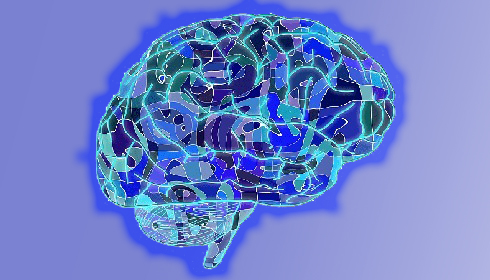
US scientists discover molecules that influence brain fkexibility
In a significant development that could help the scientific community understand memory and learning in humans and provide ways to repair neural connectivity after injuries, US scientists have discovered that sulphate groups on complex sugar molecules called glycosaminoglycans (GAGs) affect plasticity in mice brains.
Despite being known to constantly reorganise their circuits, enabling people to recognise long-lost friends while forgetting what they have eaten for breakfast, human brains' mechanisms for memory and learning are still poorly understood at the molecular level.
The findings of the study, led by researchers from the California Institute of Technology, are being presented during the fall meeting of the American Chemical Society (ACS) on August 16, 2023, in San Francisco.
The organisers said that the five-day event will see about 12,000 presentations on a wide range of science topics,
According to researchers, Sugars found in fruits and used in sweetening candies or cakes are simple varieties of sugars that can form complex sugars when combined. GAGs are formed by attaching other chemical structures, such as sulphate groups, to these sugar molecules.
"If we study the chemistry of GAGs in the brain, we can learn about brain plasticity and hopefully, in the future, use this information to restore or enhance neural connections involved in memory," says Dr Linda Hsieh-Wilson, the principal investigator of the project at the California Institute of Technology, who is scheduled to present the research at the meeting.
"These sugars regulate numerous proteins and their structures change during development and with the disease," she explains.
Chondroitin sulphate is the most common GAG form in the brain, found in the extracellular matrix and forming perineuronal nets to stabilise synaptic connections between neurons.
The research team led by Hsieh-Wilson looked at how sulfation motifs on sugar chains can modify GAG performance, possibly influencing neuroplasticity and social memory.
This may eventually result in treatments for psychiatric problems, neurodegenerative diseases, and injuries to the central nervous system.
When the researchers removed the Chst11 gene, responsible for the formation of two main sulfation patterns on chondroitin sulphate in mice, they found that mice developed abnormalities in their perineuronal nets, extracellular matrix structures responsible for synaptic stabilisation in the adult brain, found around neuron cell bodies and proximal neurites.
However, in the absence of the sulfation motifs, the number of neurons rose, modifying the sorts of synaptic connections between neurons.
Furthermore, the mice could not recognise mice to which they had previously been introduced, implying that these patterns influence social memory.
Researchers discovered that dynamic perineuronal networks may play a role in both childhood and adulthood. Targeting Chst11 in adult mice's brains, they found effects on social memory and perineuronal networks.
"That result suggests that it may be possible to manipulate these nets during adolescence or adulthood to potentially rewire or strengthen certain synaptic connections," says Hsieh-Wilson.
The capacity of neurons to regenerate after injury, known as axon regeneration, is being studied about GAGs and the sulfation patterns of these molecules.
They said that the search for protein receptors that bind particular sulfation motifs is under investigation.
They discovered that some motifs collect at the cell's surface and prevent regeneration. By preventing this, tools or treatments for axo